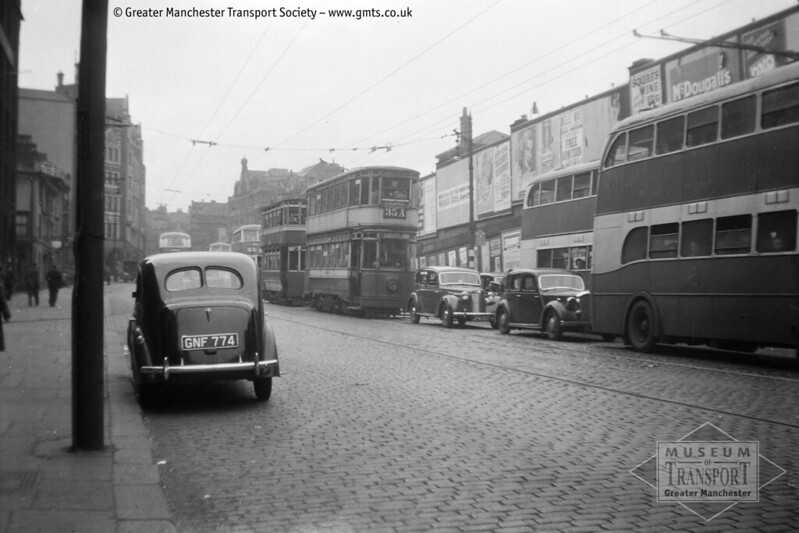I don't know Newcastle at all, but the answer is 'it depends'. Yes, it was technically possible for trams to use the positive wire of the trolleybus overhead, although the wiring would have had to be in a position to suit both the track layout and the line taken by trolleybuses.
Having said that, I'm not sure how many places ran trams and trolleybuses together for any length of time - in most places, trolleybuses replaced trams after maybe a short temporary period of joint running, although in some cases, the conversion programme was stalled in the 1939-45 war and what had been meant as temporary carried on for a while.
Glasgow ran both for quite some time, although again I don't know the patch well enough to know how often they shared the same roads, or how they dealt with the overhead. As Glasgow trams (in post war years at least) had bow collectors rather than trolley poles, the risk of a bow collector short circuiting the trolleybus overhead would have had to be considered.
The only section of London where trams (on overhead wire *) and trolleybuses shared the road for any length of time was between Woolwich and Abbey Wood, some of which had two wires, some (like
this bit at Abbey Wood - photograph and Flickr account not mine) - I have read that there were occasional incidents when a driver forgot which bit of road they were on and a tram tried to overtake a trolleybus (or vice versa) at the wrong place.
* - the trams on the Kingsway Subway routes north of the Thames that survived the north London trolleybus conversions were on conduit as far as Archway and Manor House, where they terminated just south of former change pits. Although I have read that tram drivers would occasionally put a pole up on the trolleybus overhead if they got stuck on a conduit dead section - although they weren't supposed to. Likewise the small bits of trolleybus route round Battersea and Tooting that overlapped with trams, the trams were on conduit there.


